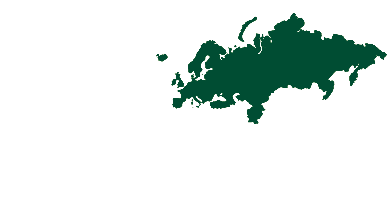Case study
2024 • Billund Vand & Energi A/S Billund Biorefinery - Innovating circular wastewater treatment
Located in Billund, Denmark, the Billund Biorefinery exemplifies circular economy principles in wastewater management. Converted from a conventional wastewater treatment plant in 2017, it now processes household wastewater, organic solid waste, and agricultural waste to produce energy, clean water, and fertilizers. The facility's innovative approach integrates thermal hydrolysis and anaerobic digestion to maximize energy recovery and nutrient recycling. As a net energy exporter and a model for resource recovery, the biorefinery has gained international recognition for its contributions to sustainable development.
Recovered Materials & Products
Energy
Electricity
Heat
Biogas
Nutrients
Fertilizer
Water
Waste Streams
Faecal sludge
Wastewater
Organic solid waste
Confirmed countries
Guatemala


Background and Context
The small town of Billund, known as the home of LEGO, faced growing challenges in wastewater treatment. There was a pressing need to reduce treatment costs, increase energy efficiency, and improve water quality while handling diverse organic waste streams from agriculture, households, and industries. In response, the existing wastewater treatment plant, operational since 1996, was transformed into the Billund Biorefinery in 2017. With a design capacity to treat wastewater equivalent to 70,000 people and 70,000 tons of organic waste annually, the facility embodies a shift toward integrated waste management and circular economy practices.
Challenges:
- Operational Transition: Converting a conventional wastewater treatment plant into a biorefinery required extensive retrofitting and integration of advanced technologies.
- Economic Viability: Securing funding for the USD 12 million project posed challenges, although grants from Denmark’s Eco-Innovation Program and the Technology Development Fund eased financial burdens.
- Waste Diversification: Managing multiple waste streams, including household wastewater, organic solid waste, manure, and industrial residues, required robust processing systems and optimized operations.
- Stakeholder Alignment: Establishing a successful public-private partnership necessitated aligning the goals of the municipal utility and private technology providers.
Approach
The Billund Biorefinery adopts a highly integrated approach to resource recovery:
- Technologies/Methods Used: The facility uses thermal hydrolysis and anaerobic digestion to process wastewater and organic waste. Thermal hydrolysis breaks down organic matter into a digestible form, which biodigesters then convert into biogas. This biogas fuels gas engines to produce electricity and heat, which are used locally for district heating and power supply.
- Public-Private Partnerships: A collaboration between Billund Vand & Energi A/S and Krüger A/S – Veolia Water Technologies enabled the project’s realization. Financial support came from national eco-innovation initiatives, reducing the capital burden and fostering technological innovation.
- Sustainability Focus: The facility integrates environmental goals with economic gains by recycling up to 98% of household wastewater and organic waste, doubling its intake capacity compared to the previous plant.
Implementation Steps
- Plant Conversion: Retrofitting the existing wastewater treatment facility to incorporate advanced thermal hydrolysis and anaerobic digestion systems.
- Infrastructure Upgrades: Expanding the plant’s capacity to handle organic waste streams from households, agriculture, and industries.
- Partnership Formation: Establishing a public-private partnership for funding, design, and operational expertise.
- Operational Scaling: Commencing operations in 2017, the facility became fully operational, achieving net energy export and significant resource recovery milestones.
Outcomes and Impacts
The Billund Biorefinery has transformed wastewater treatment by achieving impressive results in energy recovery and resource recycling. Generating 3.2 million cubic meters of biogas annually, the facility produces 8.8 gigawatt-hours of heat and 7.8 gigawatt-hours of electricity, exceeding its energy needs by 70%. It also produces 5,000 tons of nutrient-rich organic fertilizer annually, reducing reliance on synthetic alternatives while enhancing agricultural productivity. The plant recycles 98% of household and industrial organic waste, treating 3.8 million cubic meters of clean water for environmental release. Financially, the biorefinery generates $2 million annually through energy sales, fertilizer production, and gate fees, establishing its economic and environmental sustainability. International accolades, such as the European Business Award for the Environment, highlight its status as a model for circular economy innovation.
Lessons Learned
The Billund Biorefinery demonstrates the power of innovation and collaboration in transforming wastewater management. Public-private partnerships were key, blending technical expertise with financial support to deliver a scalable model. Advanced technologies, like thermal hydrolysis and anaerobic digestion, enabled efficient resource recovery, while diversified revenue streams ensured financial viability. The project underscores the importance of aligning environmental and economic goals and offers a replicable model for regions seeking sustainable waste management solutions. Localized strategies and stakeholder engagement remain critical for adapting this success to other contexts.
Learn more
The text of the case study is available at the link below:
https://files.grida.no/sdm_downloads/1146/
This case study is extracted from the publication linked below: "Wastewater - Turning Problem to Solution", UNEP (2023)
https://www.unep.org/resources/report/wastewater-turning-problem-solution#:~:text=This%20new%20report%2C%20%E2%80%9CWastewater%20-,blocks%2C%20described%20in%20the%20publication.
More about Billund Biorefinery:
https://www.billundbiorefinery.com/
Technologies
Themes
Capacity building
Technologies
Policy and regulation